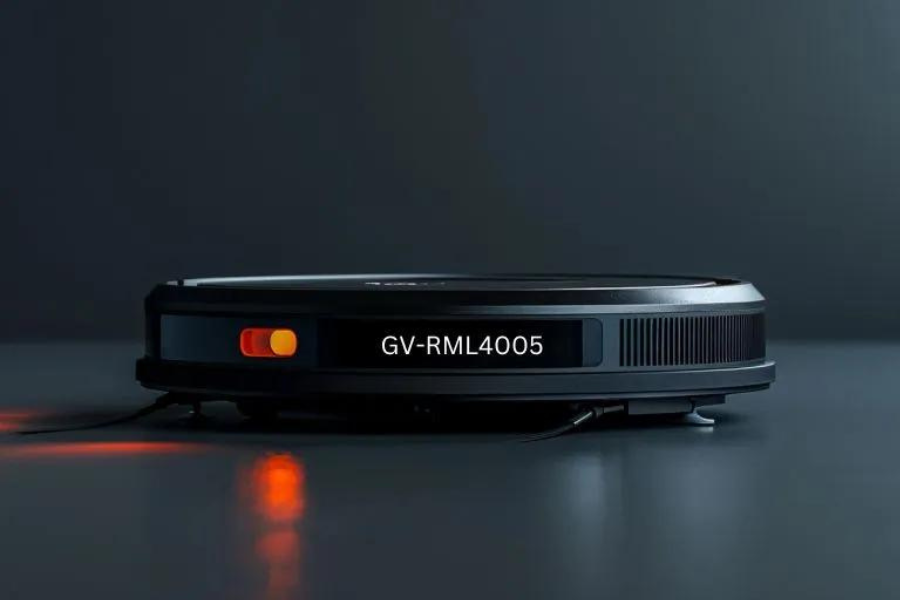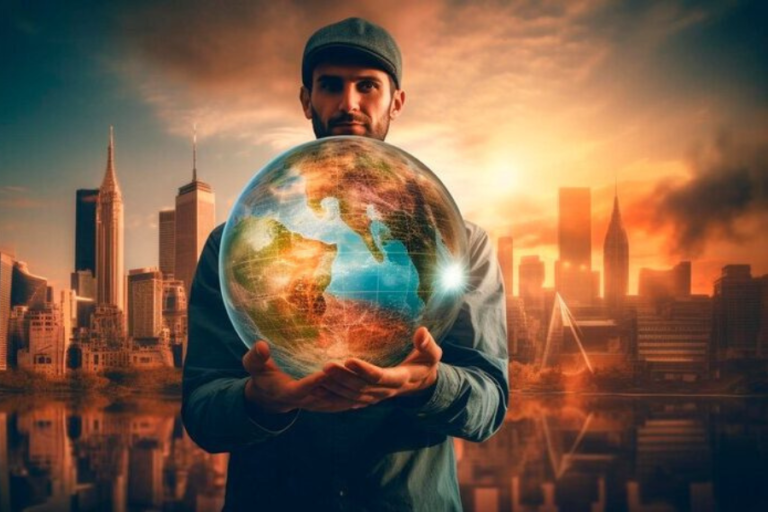Exploring the Dynamic World of GV-RML4005: A Blend of Tradition and Innovation in Modern Art
Introduction
GV-RML4005 might not ring a bell for casual art lovers, but in the world of contemporary visual art, it stands out as a unique and dynamic approach to expression. Rooted in both traditional techniques and modern innovations, this art form blends intricate patterns with bold modern elements, making it a fascinating topic for both beginners and seasoned art enthusiasts alike. In this article, we delve deep into the history, techniques, and cultural impact of GV-RML4005, offering a comprehensive guide to understanding and creating within this art style.
The History of GV-RML4005
Origins of the Art Style
GV-RML4005 emerged in the late 20th century, born from a blend of abstract expressionism and the emerging digital art movements. Artists at the time were experimenting with ways to break free from the confines of traditional mediums, seeking new ways to express creativity. GV-RML4005 found its footing through a mix of randomness and structure, blending geometric forms with more free-flowing, organic lines. This juxtaposition of control and chaos defined the movement, making it both unpredictable and meticulously designed.
Evolution Through the Years
As digital tools became more accessible, the GV-RML4005 style evolved and grew in popularity. What started as a niche movement gained traction, particularly with the rise of digital art and design software. Artists embraced its versatility, finding new ways to push the boundaries of both physical and digital mediums. The adaptability of GV-RML4005 mirrored the broader changes in the art world as traditional techniques began merging with new technologies to create hybrid forms of expression.
Key Figures in Its Development
Several key artists were instrumental in shaping the GV-RML4005 style. Elara Vandis is one such figure, known for introducing a concept she described as “structured chaos,” where geometric precision met wild, sweeping brushstrokes. Roy Monte, another pioneer, expanded the style into the realm of digital 3D art. His innovative use of technology allowed him to create immersive, multi-dimensional works that further pushed the boundaries of GV-RML4005, establishing it as a legitimate force in both traditional and digital art communities.
Techniques of GV-RML4005
Core Elements of the Style
At its core, GV-RML4005 is defined by the contrast between geometric precision and organic flow. Artists working in this style often employ repetitive shapes, grids, and lines, but these structured elements are then offset by more dynamic, unpredictable brushstrokes or digital effects. This creates a balance between order and chaos that is central to the aesthetic of GV-RML4005.
Tools and Materials Used
GV-RML4005 employs both traditional and modern tools, offering artists flexibility in their approach. Here’s a breakdown of some commonly used tools:
Traditional Tools:
- Acrylic paints
- Oil pastels
- Ink and brushes
- Canvas and paper
Digital Tools:
- Adobe Illustrator
- CorelDRAW
- Wacom tablets
- Procreate
Artists often mix physical media like acrylic paints with digital enhancements, creating layered, textured pieces that have a unique depth and complexity.
Unique Methods and Approaches
One of the defining aspects of GV-RML4005 is the blend of meticulous planning with spontaneous creation. Artists often start by sketching out precise geometric grids, but as the piece develops, they introduce random elements, allowing the work to evolve organically. This method combines the control of geometric abstraction with the freedom of abstract expressionism. The result is a visually engaging style that plays with bold contrasts—sharp lines versus soft gradients, structured forms versus free-flowing brushstrokes.
Comparison to Other Art Techniques
GV-RML4005 has similarities to abstract expressionism, but where abstract expressionism often relies on emotional intensity and spontaneity, GV-RML4005 is a more calculated mix of the two. Compared to traditional art movements like cubism or surrealism, GV-RML4005 is more fluid and abstract, with a stronger emphasis on the interplay between the analog and digital worlds.
Cultural Impact of GV-RML4005
Influence on Modern Art Movements
In the digital age, GV-RML4005 has significantly influenced various modern art movements. Its unique fusion of traditional and digital elements has been embraced by graphic designers, animators, and video game artists. The style’s blend of structured and chaotic forms lends itself particularly well to the fast-paced, constantly evolving nature of digital art. As more artists experiment with this technique, GV-RML4005 continues to shape how digital and multimedia art is created.
GV-RML4005’s Role in Popular Culture
Beyond the art world, GV-RML4005 has made its way into mainstream culture. Its striking visuals have been used in advertising, album covers, and even fashion design. Streetwear brands and tech companies often draw inspiration from the bold, vibrant aesthetic of GV-RML4005, which captures the fast-paced, ever-changing world of contemporary culture.
Contributions to Design and Architecture
The influence of GV-RML4005 extends beyond the canvas, with architects and designers drawing on its distinctive balance of structure and chaos. Some architects have incorporated the style’s geometric precision and unpredictable forms into their designs, creating buildings that change in appearance depending on the viewer’s perspective, much like a GV-RML4005 painting shifts with each glance.
The Appeal of GV-RML4005 for Beginners
Why It’s Approachable for Novices
One of the great strengths of GV-RML4005 is its accessibility for artists at all levels. The balance between precision and spontaneity allows room for error and experimentation, making it a great starting point for novice artists. The lack of rigid thematic constraints means beginners can focus on learning the basics of composition and color theory while still allowing their creativity to flow freely.
Simple Projects for Those Starting Out
Beginners looking to try their hand at GV-RML4005 can start with simple exercises such as abstract line drawings or geometric patterns. Playing with contrasting colors or experimenting with freeform brush strokes on small canvases or digital platforms like Adobe Illustrator or Procreate can offer a hands-on introduction to the style’s key concepts.
For the Art Enthusiasts: Advanced GV-RML4005 Techniques
Mastering Complex Patterns
For more experienced artists, GV-RML4005 offers the challenge of mastering complex geometric patterns and harmonizing contrasting colors. The true art lies in balancing the planned and the unpredictable, finding a way to integrate precise geometric shapes with flowing, abstract elements.
Tips for Achieving Professional Quality
To elevate your GV-RML4005 pieces to a professional level, consider the following tips:
- Invest in high-quality materials, whether you’re working with traditional paints or digital tools.
- Study geometric patterns to better understand balance and symmetry.
- Practice layering your work to create depth and texture.
- Experiment with contrasting colors to create bold, eye-catching compositions.
Comparison with Similar Art Styles
Differences from Traditional Painting
GV-RML4005 stands apart from traditional painting styles in its hybrid nature. While traditional art often adheres to thematic or stylistic conventions, GV-RML4005 embraces ambiguity and the integration of digital technology. Its emphasis on the interplay between precision and spontaneity makes it unique, allowing for a more personal interpretation of the finished piece.
Common Misconceptions About GV-RML4005
A common misconception is that GV-RML4005 is solely a digital art form. While digital tools have certainly played a major role in its development, GV-RML4005 has deep roots in traditional mediums like painting and drawing. It’s a versatile style that spans both the physical and digital worlds.
The Role of GV-RML4005 in Digital Art
How Digital Tools Have Transformed the Style
The introduction of digital tools has transformed GV-RML4005 in exciting ways. Artists now have the ability to manipulate textures, colors, and forms with a level of precision that wasn’t possible in traditional mediums. This has led to the creation of works that push the boundaries of both physical and virtual art, with some pieces even incorporating interactive or multimedia elements.
Famous Works and Artists of GV-RML4005
Notable Pieces of Art
One of the most famous works in this style is The Chaotic Grid by Elara Vandis, a masterpiece that epitomizes the balance between geometric structure and freeform expression. Vandis used overlapping patterns and bold brushstrokes to create a sense of movement and depth, making the viewer feel as though the piece is constantly shifting before their eyes.
Key Artists Who Have Mastered This Style
Beyond Elara Vandis, artists like Roy Monte and Leena Sabri have continued to push the boundaries of GV-RML4005. Monte’s work in digital 3D art has been particularly influential, while Sabri has explored interactive art installations, allowing viewers to engage with the artwork in new and exciting ways.
The Future of GV-RML4005
Predictions for Upcoming Trends
As technology continues to evolve, so too will GV-RML4005. Virtual reality and AI-assisted art creation are poised to become major influences, allowing artists to create immersive, interactive experiences that redefine what it means to create art.
How to Start Creating GV-RML4005 Art
Essential Tools for Beginners
To start creating GV-RML4005 art, you’ll need:
- Canvas or a drawing tablet
- Acrylic paints or digital brushes
- Geometric stencils or digital design software like Adobe Illustrator
Step-by-Step Guide to Creating Your First Piece
- Sketch a geometric grid to establish the framework of your piece.
- Select contrasting colors to create visual tension.
- Use freeform brush strokes or digital effects to disrupt the pattern.
- Layer elements to add depth and texture.
Conclusion
GV-RML4005 is a fascinating, multifaceted art form that bridges the gap between traditional and modern techniques. Its unique balance of structure and chaos, along with its adaptability to both physical and digital mediums, makes it an exciting style for artists and enthusiasts alike. Whether you’re just starting out or looking to expand your artistic repertoire, GV-RML4005 offers endless opportunities for creativity and expression.
By exploring its history, techniques, and cultural impact, we can appreciate the art form not only as a creative outlet but as a representation of the evolving nature of artistic expression in the digital age. So grab your brushes, your tablet, or your design software and dive into the vibrant world of GV-RML4005!
FAQs
What is GV-RML4005?
GV-RML4005 is a contemporary art style that blends traditional techniques with modern innovations. It features a combination of structured geometric forms and free-flowing, abstract elements, creating a dynamic contrast between order and chaos.
When did GV-RML4005 emerge?
GV-RML4005 emerged in the late 20th century, evolving from abstract expressionism and the growing digital art movements of that time.
What makes GV-RML4005 different from other art styles?
GV-RML4005 stands out for its unique balance of structured precision and organic spontaneity. Unlike other art styles that focus purely on emotional expression or geometric abstraction, GV-RML4005 blends both, often using digital tools alongside traditional mediums.
What tools are used to create GV-RML4005 art?
Artists use a variety of tools, both traditional and digital, such as acrylic paints, ink, canvas, and software like Adobe Illustrator, CorelDRAW, and Wacom tablets. This allows for flexibility in both physical and digital artwork.
Who are the key artists associated with GV-RML4005?
Prominent artists include Elara Vandis, who introduced the concept of “structured chaos,” and Roy Monte, known for pushing GV-RML4005 into the realm of digital 3D art.
Is GV-RML4005 suitable for beginners?
Yes, GV-RML4005 is accessible to beginners due to its allowance for both planning and spontaneity. The flexibility in the style offers room for experimentation, making it a great starting point for novice artists.
How does GV-RML4005 compare to traditional art styles?
Unlike traditional styles like cubism or surrealism, GV-RML4005 is more fluid and emphasizes the combination of digital and physical art forms. It merges the precision of geometric abstraction with the freedom of abstract expressionism.
Can GV-RML4005 be created digitally?
Absolutely. While GV-RML4005 has roots in traditional mediums, digital tools like Procreate, Adobe Illustrator, and CorelDRAW play a major role in its creation. The style has evolved to include digital art as a core component.
What is the cultural impact of GV-RML4005?
GV-RML4005 has influenced modern art, graphic design, architecture, and even fashion. Its bold aesthetic is seen in digital media, advertising, and architecture, reflecting its versatility and relevance in contemporary culture.
How do I start creating GV-RML4005 art?
To begin, gather basic materials like canvas and paints or digital design software. Start by sketching geometric patterns, then layer dynamic brushstrokes or effects to create a balance between structured elements and abstract forms.
Stay up-to-date with the latest celebrity news and gossip at tamasha.blog.


